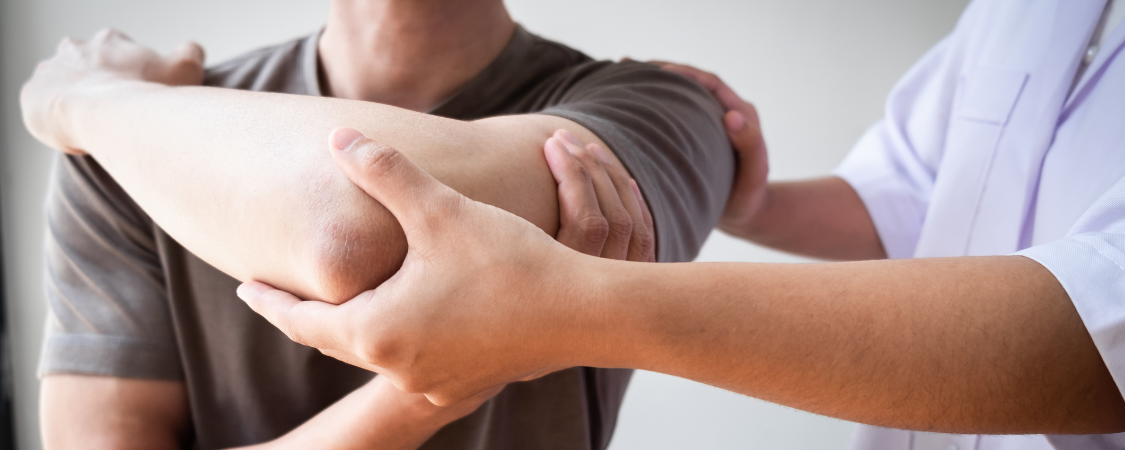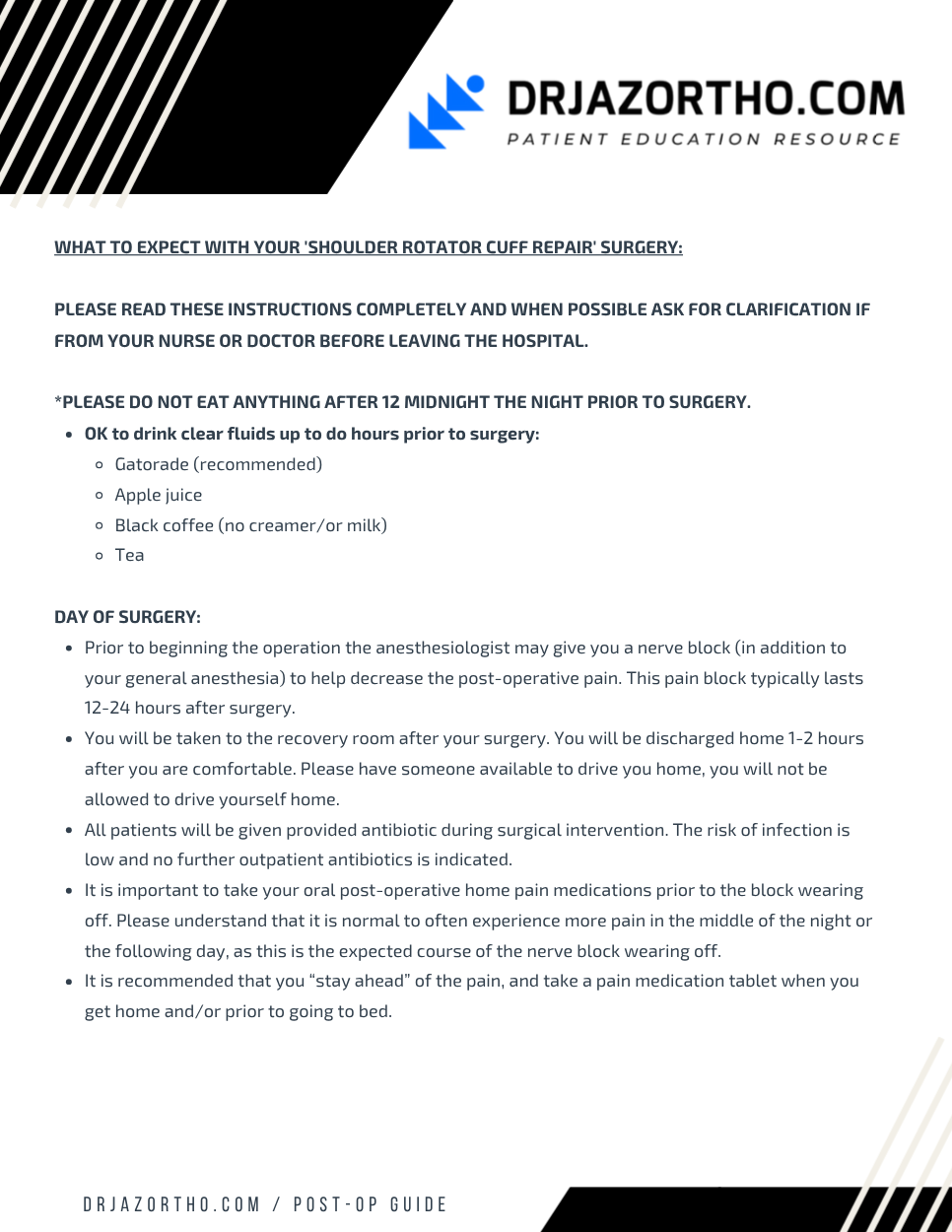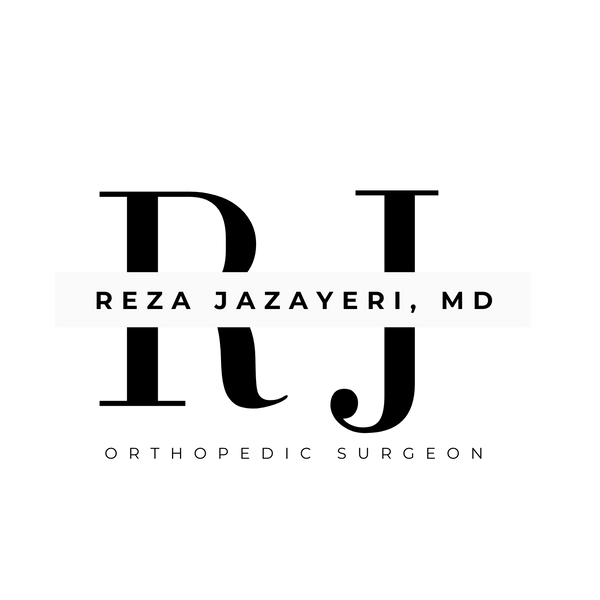
Rotator Cuff Repair
-
What is a rotator cuff tear?
A rotator cuff tear may result from an acute injury, such as a fall, or may be caused by normal age-related wear and tear with degeneration of the tendon. A rotator cuff tear can extend or get larger over time. This can occur with repetitive use or a re-injury. It is common for patients with known rotator cuff disease to have acute pain and weakness following a minor injury. This likely represents extension of an existing tear. If you know you have a rotator cuff tear, then worsening pain and decreasing strength may benefit from arthroscopic repair.
-
Procedure Description:
Surgery to repair a torn rotator cuff most often involves re-attaching the tendon to the head of humerus (upper arm bone). A partial tear, however, may need only a trimming or smoothing procedure called a debridement. A complete tear is repaired by stitching the tendon back to its original site on the humerus.
Your doctor may offer surgery as an option for a torn rotator cuff if your pain does not improve with nonsurgical methods. Continued pain is the main indication for surgery. If you are very active and use your arms for overhead work or sports, your doctor may also suggest surgery.
-
Other signs that surgery may be a good option for you include:
- Your symptoms have lasted 6 to 12 months
- You have a large tear (more than 3 cm) and the quality of the surrounding tendon tissue is good
- You have significant weakness and loss of function in your shoulder
- Your tear was caused by a recent, acute injury

What to expect with an RCR surgery?
- Rotator cuff tears are performed arthroscopically (with a camera/scope) using small instrumentations to repair the torn tendon back to its normal location on the humerus. (see attached video animation).
- This surgery is done as an outpatient procedure. You will arrive at the hospital 2 hours prior to your surgery. General anesthesia (you will be asleep) in addition to a pain/nerve block will be provided just prior to surgery in the pre-op area.
- Depending on the size and complexity of your rotator cuff tear, surgery usually takes 1.5-2 hours. After surgery is completed you will spend approximately 1 hour in the recovery room, and once your pain is controlled and vital signs are stable, you will be discharged home.
- The entire process will take approximately 5-6 hours the day of surgery.
-
Sling
- You will be discharged home with a sling that will be used for 6 weeks after surgery to help protect your repair.
- You will keep sling on for most of the day and during sleep for the first 6 weeks.
- You are encouraged to immediately use your hands/wrist and elbow for gentle range of motion exercises.
- The sling can be taken off 4-5 times a day for a short period of time to do range of motion exercises as will be instructed.
- You can type and do a desk job a few days after surgery.
- Showering is allowed 3 days after surgery.
-
Pain Medication
- Narcotics(Percocet) and anti-inflammatory medications are used for the first 2 weeks after surgery.
- After 2 weeks, a non-narcotic pain medications and anti-inflammatory medications will be provided.
-
Physical therapy
- Home therapy exercise will begin on the first day after surgery. You will be provided an app (myHealthTrack) during your pre-op visit that can be downloaded on your smartphone. This will guide you through your home therapy for the first 12 weeks.
- In addition, you will start in person physical therapy approximately 2 weeks after surgery. This will be in conjuction with the myHealthTrack App
- Most patients will continue to do some form of physical therapy (home/in person) for up to 6 months after surgery.
-
Recovery
- Depending on the size and complexity of your tear, recovery can be anywhere from 6 months to 1 year. This will be further discussed with you before and after surgery.
- In general, most patients can resume driving by 3-4 weeks.
- Return to a desk job approximately 2 weeks.
- Can resume walking immediately.
- Overhead lifting and strengthening exercise can usually start 6 weeks after surgery.
- Getting back to the gym and upper body exercise can usually be started 3-4 months after surgery depending on your tear size.

Post-Op Instructions
What to expect with your shoulder rotator cuff repair surgical directions.
WATCH: Rotator Cuff Repair with Arthrex® SpeedBridge™
WATCH: Bio Fertilization™ Rotator Cuff Repair Protocol
*IF YOU HAVE ANY ADVERSE EFFECTS WITH THE MEDICATIONS or QUESTIONS, PLEASE CALL OUR OFFICE during clinic hours at 855-892-0919 or the After-hours nurse advice at 1-888-576-6225.
